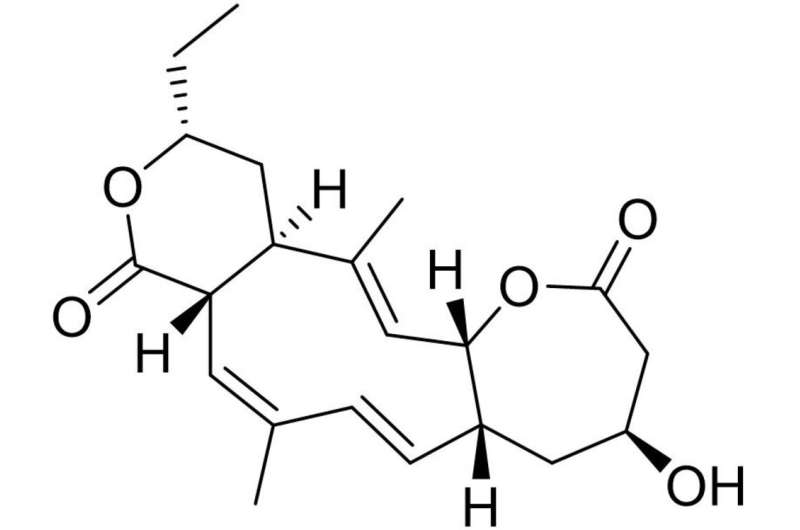An unusual molecule protects nerve cells from degeneration

An international research team led by Professor Stephanie Grond from the Institute of Organic Chemistry at the University of Tübingen has found that the natural substance collinolactone reduces artificially-induced stress on nerve cells, protecting them from the kind of damage that occurs in neurodegenerative diseases. Collinolactone is isolated from soil bacteria, and its chemical structure is identical to that of rhizolutin, which was isolated from bacteria on the roots of the Asian medicinal plant ginseng. Last year, a Korean research team discovered in animal experiments that rhizolutin can dissolve the protein aggregations around nerve cells that are characteristic of Alzheimer's disease. The study by Professor Grond and her team has been published in the journal Angewandte Chemie.
The dementia caused by Alzheimer's accounts for 50 to 75 percent of cases of neurodegenerative diseases in which the nerve cells of the central nervous system are gradually destroyed. Typical of this as yet incurable disease are malformed protein deposits outside the nerve cells in the brain, consisting of misfolded amyloid beta proteins and tangled tau proteins. Most of the more than one hundred candidate compounds that have been clinically tested since 2003 for their ability to dissolve Alzheimer's plaques have proven useless. "Research, therefore, has to seek new chemical structures. Collinolactone is interesting because its unusual carbon skeleton of three linked rings with a rare 6-10-7 combination of the rings makes it fundamentally different from previously-tested substances," says Stephanie Grond.
Comparing chemical structures
Collinolactone was isolated from the soil bacterium Streptomyces collinus more than 20 years ago. Since it did not exhibit antimicrobial activity against other bacteria or fungi, it was not investigated further for pharmaceutical purposes at that time. When the research team compared the recently-redescribed rhizolutin with collinolactone, it was found that the same carbon skeleton underlies the structure of both substances. "We reevaluated the previously-published data on rhizolutin and corrected the chemical structure. It became clear that the correct structure is identical to collinolactone," explains Julian Schmid, first author of the study and a doctoral student in Grond's research group. In the next step, the microbiology researchers analyzed which gene clusters in the Streptomyces bacteria are responsible for the production of collinolactone. They then genetically engineered a Streptomyces strain that produces the substance in greater quantities, thus making further studies possible.
The researchers produced chemical derivatives of collinolactone and modified various side groups in the basic structure. All these substances were tested in the laboratory for their influence on neurons artificially placed under stress. "Only the unmodified natural substance collinolactone had the protective effect on nerve cells," Grond reports. This should be seen quite independently of the previously proven effect of rhizolutin, which in laboratory and animal tests was able to dissolve the plaques typical in Alzheimer's disease. According to the research team, these results can be equated for collinolactone. "Both properties together make collinolactone interesting as a substance candidate for the development of Alzheimer's drugs," says Grond. This is because animal tests with rhizolutin have shown that the substance can enter the mammalian brain and exert its effect on nerve cells there, she adds. Further tests must now show whether collinolactone can be developed into a drug.
More information: Julian C. Schmid et al, The Structure of Cyclodecatriene Collinolactone, its Biosynthesis, and Semisynthetic Analogues: Effects of Monoastral Phenotype and Protection from Intracellular Oxidative Stress, Angewandte Chemie International Edition (2021). DOI: 10.1002/anie.202106802
Journal information: Angewandte Chemie International Edition , Angewandte Chemie
Provided by University of Tübingen





















